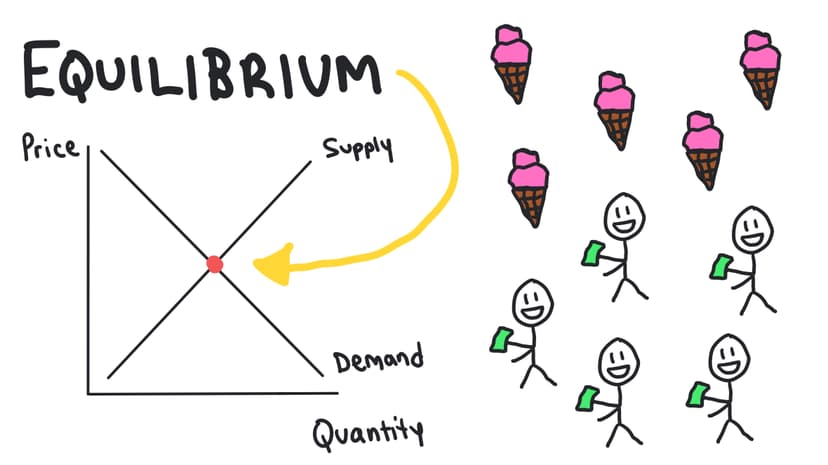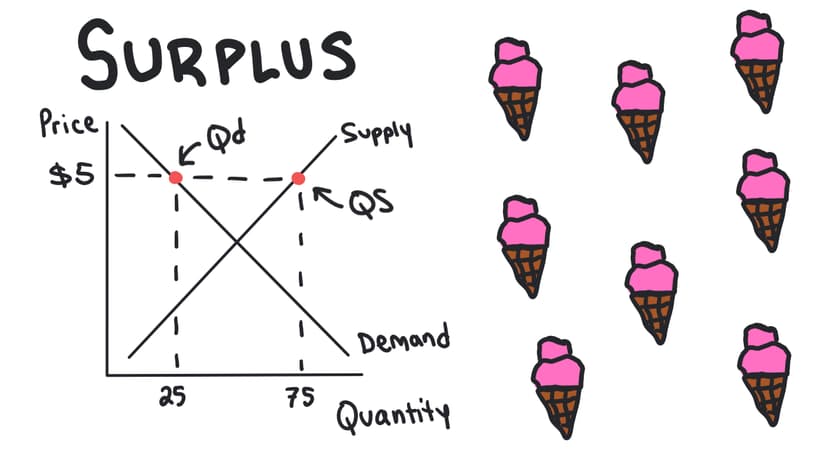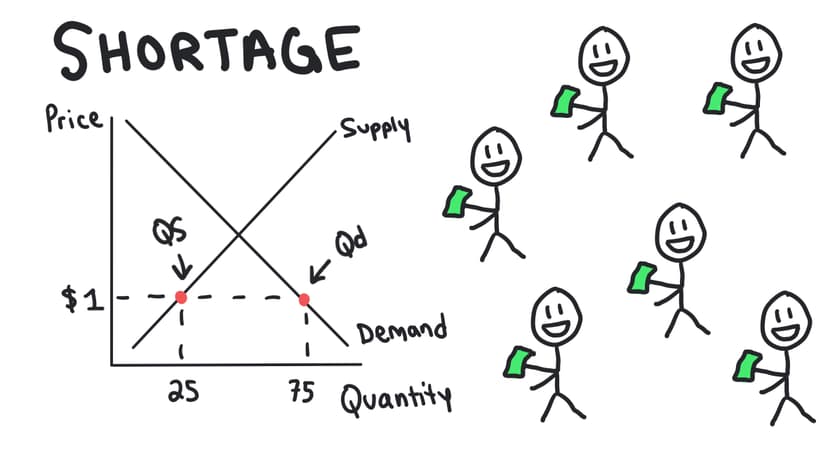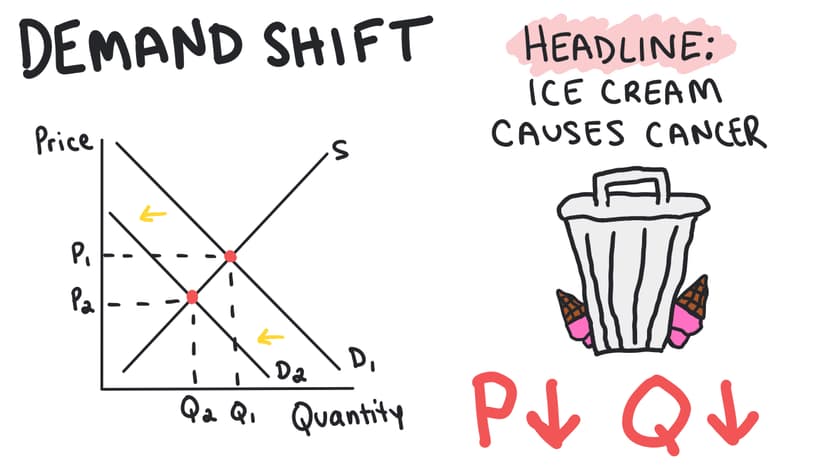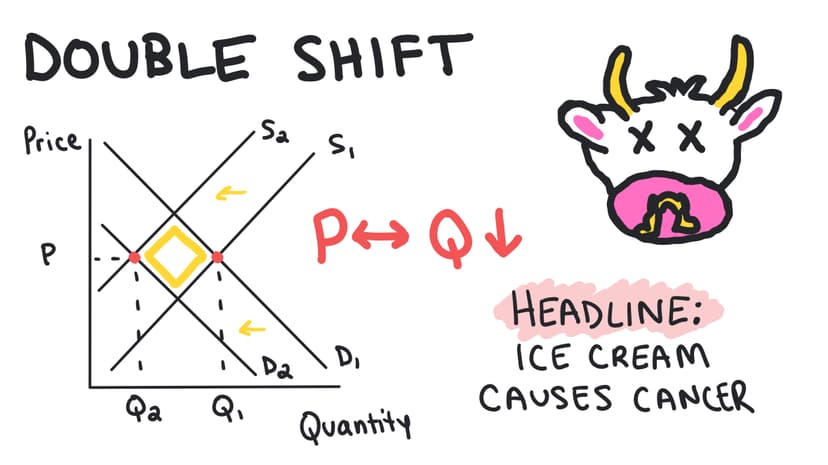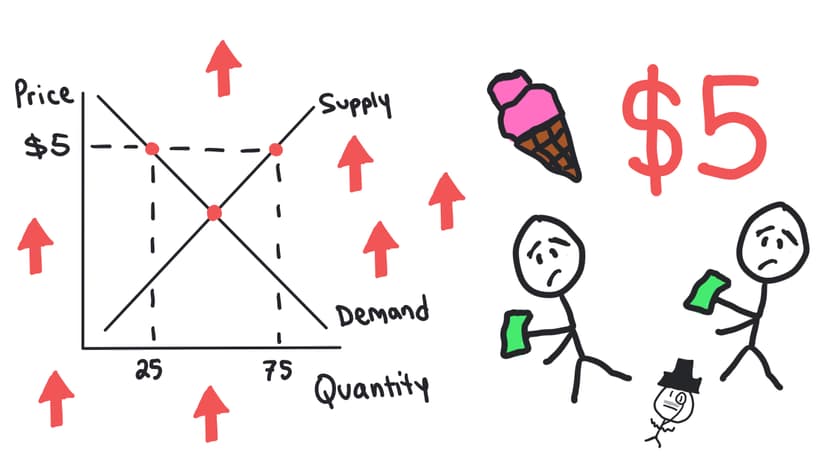AP Macro Unit Cheat Sheets
Key terms, formulas, and graphs for every unit.
Strengthen your mastery of Unit 1!
Test your knowledge with a full-length practice test.
1.1 - Key Terms & Definitions
Resources
Inputs used to create goods and services, including time, money, natural resources, workers, and machines.
Macroeconomics
The study of how entire countries face the issue of scarcity.
Microeconomics
The study of how individuals and companies face the issue of scarcity.
Scarcity
The fundamental problem of economics where there are not enough resources to fulfill all wants and needs.
Factors of Production
The resources used to produce all goods and services.
- •Land
- •Labor
- •Capital
- •Entrepreneurship
Land
All natural resources used in production.
- •Example: Farmland used to grow crops, or minerals used to build electronics.
Labor
The human effort and skills used in production.
- •Example: The work done by a chef in a restaurant or an engineer at a tech company.
Capital
Human-made resources used to create other goods and services.
Physical Capital
The tools, machinery, and buildings used in production.
Human Capital
The knowledge and skills a worker gains through education and experience.
Entrepreneurship
The ability to combine the other factors of production to create goods and services, often involving risk-taking.
1.1 - Whiteboards








1.2 - Key Terms & Definitions
Trade-off
Giving up one thing to get another due to scarcity.
Opportunity Cost
The value of the next best alternative given up when making a choice.
Increasing Opportunity Cost
When the opportunity cost of making a good increases the more of it you produce, shown by a bowed-out PPC.
Production Possibilities Curve (PPC)
A graph showing different combinations of two goods that can be produced using all resources efficiently.
- •Points on the curve = efficient use of resources
- •Points inside = inefficient use
- •Points beyond = unattainable
Constant Opportunity Cost
When the opportunity cost of producing a good remains the same, shown by a straight-line PPC.
Outward Shift (PPC)
Represents economic growth caused by an increase in quantity/quality of resources or improved technology.
Inward Shift (PPC)
Represents loss of productive capacity due to events like disasters or war.
1.3 - Key Terms & Definitions
Absolute Advantage
The ability to produce more of a good than another producer, given the same resources.
Comparative Advantage
The ability to produce a good at a lower opportunity cost than another producer.
Terms of Trade
The rate at which one good can be exchanged for another in trade; must lie between both parties’ opportunity costs to be mutually beneficial.
1.3 - Whiteboards







1.4 - Key Terms & Definitions
Demand
A consumer’s ability and willingness to pay for a good or service.
Law of Demand
There is an inverse relationship between the price of a good and the quantity demanded.
Demand Curve
A downward-sloping graph showing the relationship between price and quantity demanded.
Demand Schedule
A table showing the inverse relationship between the price of a good and quantity demanded.
Shifters of Demand
The five non-price factors that shift the entire demand curve.
- •Tastes/preferences
- •Price of related goods
- •Income
- •Number of buyers
- •Expectations
1.4 - Whiteboards














1.5 - Key Terms & Definitions
Supply
A producer’s ability and willingness to sell a good or service.
Law of Supply
There is a direct relationship between the price of a good and the quantity supplied.
Supply Curve
An upward-sloping graph showing the relationship between price and quantity supplied.
Supply Schedule
A table showing the direct relationship between the price of a good and quantity supplied.
Shifters of Supply
The five non-price factors that shift the entire supply curve.
- •Cost of inputs
- •Number of sellers
- •Sellers’ expectations
- •Price of related goods
- •Government action
1.5 - Whiteboards













1.6 - Key Terms & Definitions
Equilibrium
When quantity supplied equals quantity demanded; the intersection of supply and demand curves.
Disequilibrium
Any time the market price is not at equilibrium, causing a surplus or shortage.
Surplus
When quantity supplied exceeds quantity demanded; occurs when price is above equilibrium.
Shortage
When quantity demanded exceeds quantity supplied; occurs when price is below equilibrium.
Indeterminate Change
Result of a double shift where the change in equilibrium price or quantity cannot be determined without knowing relative shift sizes.
1.6 - Whiteboards


